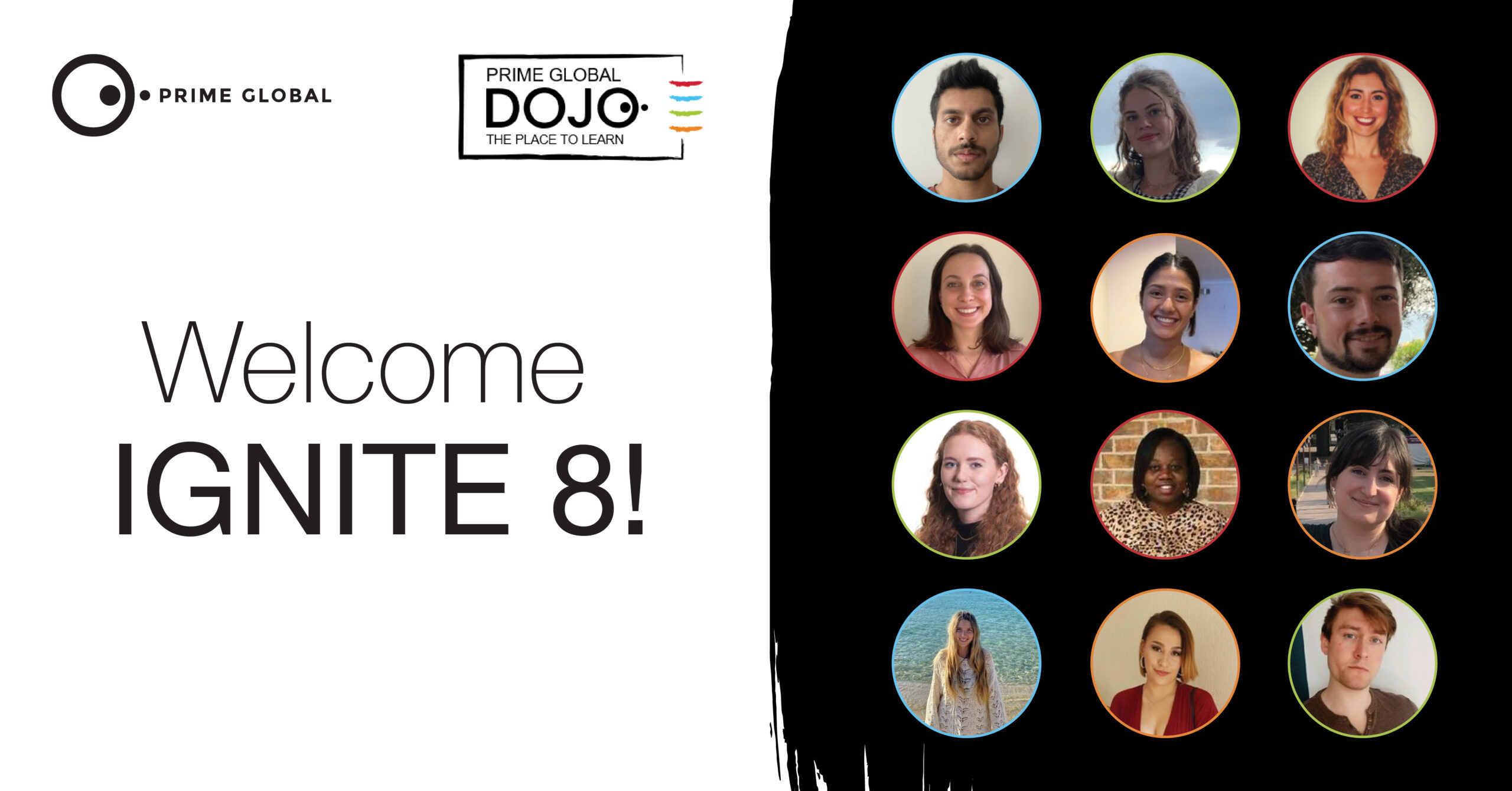Olivia Kersey, Patient Engagement Strategist, outlines what we can learn from 2021 to optimise patient engagement strategy and implementation in 2022.
While there would be no such thing as the pharmaceutical industry without patients, it’s only in recent years that collaboration with patients has started to enter the mainstream. While 2021 was a good year for patient engagement, 2022 can be both bigger and better.

Diversity: not an afterthought
It is well established that diversity in clinical trials has historically been poor and often continues to be. (1) (2) This has entrenched an irrational tradition of producing medicines which are not tested on patients representative of many of those for whom prescription of the treatment will eventually be considered. (3) This is particularly worrying given factors associated with, for example, race or ethnicity, may pose a significant contribution to the variability of medication responses (and thus alteration of the risk/benefit ratio) seen among real-life patients. (4) What’s more, as precision medicine increasingly takes hold in modern healthcare, it will be more important than ever to understand each patient’s individual biology in order to tailor treatment most optimally, and representative trial data will be crucial for this. (5)
Given the clear importance of improving clinical trial diversity, it was encouraging to see numerous developments in the field over the course of 2021, including:
- The publication of a toolkit from the MRCT Center Diversity Workgroup
- The activation of the first-ever industrywide clinical trial diversity principles from Pharmaceutical Research and Manufacturers of America (PhRMA) and its member companies (6)
- A two-day meeting held by the Clinical Trials Transformation Initiative (CTTI) to discuss the systemic changes required to address poor diversity in trials (7)
In 2022, we can be inspired by the work of these groups to implement diversity considerations (see CTTI recommendations and resources due for release early this year) into our patient engagement practices. Even relatively small steps like ensuring diverse patient perspectives are included in advisory panels add up over time to create a more genuinely inclusive culture and improve representation of real patients in pharmaceutical research. This is especially effective when the diversity goals are tailored for each disease in order to best reflect the demographics of that patient population. However, inclusion is not enough; a proactive approach is needed if decades of damage to underrepresented patient communities are to be truly overcome. Patient engagement practitioners would do well to run surveys and studies into better understanding healthcare disparities and the needs that result within these patient populations due to the inequalities suffered. Only then can we hope to embed a culture of pharmaceutical practice that meaningfully supports historically sidelined patients in a way that is relevant to them.
Key takeaway: in 2022, it’s time for industry to:
- Actively collaborate with more non-White patients, older people, and other underrepresented groups to understand and address their medical needs and experiences and access to trials
- Ensure project leads are held accountable for evaluating and thus removing or alleviating barriers to participation where appropriate
Amplifying the patient voice

At Prime Patient, we believe in not only listening to patients, but also amplifying their voices so they receive the attention they deserve, being the fundamental stakeholders of pharma that they are. Thus, it was with the theme #AmplifyThePatientVoice that the Prime Patient team launched the first ever annual Patient Engagement Day on September 1st, 2021.
The highlight of the event was a patient interview-inspired webinar on meaningful amplification of the patient voice, which was attended by representatives from 32 pharma companies. The attendance numbers were encouraging, revealing that interest in patient perspectives is clearly growing. This will be key in 2022; while companies do currently gather patient insights and publicly share patient stories regarding their condition(s), the time has come to publicly amplify patients’ views regarding pharmaceutical practice (e.g., clinical trials, treatment access, or information provision) and what is being done to effect the changes required. This level of transparency and accountability will build trust between patients and pharma and also serve to position patients as the essential stakeholders they rightfully are. Lest we forget that for this to be done properly, it will be imperative to amplify a wide variety of patient voices – not simply those white, English-speaking voices we are used to seeing.
Key takeaway: in 2022, it’s time for industry to:
- Consistently involve patient perspectives in engagement strategy discussions
- Routinely amplify a diverse range of patient voices
Actively seek and incorporate patient views via PREMs
In 2021, it was great to see the Medicines and Healthcare Products Regulatory Agency (MHRA) prioritise the embedding of Patient-Reported Outcomes (PROs) into all licensing decisions via the publication of their draft 2020-25 Patient Involvement Strategy. This reflected an ongoing shift in how industry operates, as the tools used to measure PROs, Patient-Reported Outcome Measures (PROMs), are increasingly being included in R&D protocols and regulatory submissions – certainly a step in the right direction for meaningful amplification of the patient voice. Ultimately, it’s vital drug developers and regulators do not simply assume which outcomes matter most to patients, or that all the information about a drug worth knowing can be obtained without the input of the people receiving the treatment.
PROMs have had their spotlight and rightly so, but now the time has come to also reap the benefits of often-overlooked Patient-Reported Experience Measures (PREMs). PREMs have been around in hospital care for a while, but the published literature remains frustratingly sparse – especially regarding the application of PREMs from an industry perspective.
In 2022, the pharmaceutical industry needs to fund the development and publication of robust PREMs for different therapy areas and contexts, such as hospital care or clinical trial experiences. Pharma must ensure these measures and the results of their implementation are publicly available and promoted via journal publications, as otherwise industry cannot hope to come close to fulfilling the potential for improvement to patients’ experiences of care. After all, the more a PREM is used and consequent results are published, the more opportunities will present themselves for pharma to develop or improve products and services in the realm of patient experience. For example, PREM results can reveal barriers to clinical trial retention, allowing pharmaceutical companies to address such barriers and consequently speed time to drug approval and reduce R&D costs. Similarly, PREMs have the potential to unearth reasons behind poor treatment adherence, a challenge which causes the US pharmaceutical industry to lose 250 billion USD in potential revenue each year – now what kind of pharma company wouldn’t want to reduce losses like that?
Key takeaway: in 2022, it’s time for industry to:
- Fund and develop PREMs in collaboration with patients, healthcare professional advisors and patient engagement specialists
- Use results from PREM surveys to optimise practices and achieve a win-win for patients and pharma, e.g., in clinical trials, treatment consultations, or information provision settings
Learning, growing, and optimising: measuring the success of patient engagement
While embedding patient engagement into the pharmaceutical business model is an essential component of improving patient lives and the efficiency of healthcare delivery, simply running engagement programmes is not enough – pharma must take the time to learn from mistakes and consistently strive for growth so patient communities may be best supported and businesses can maximise returns. For this, self-satisfied complacency is out, and assessment tools are in – enter the PARADIGM Patient Engagement Metrics Framework.
PARADIGM, a multi-stakeholder consortium formed as part of the Innovative Medicines Initiative, was set up in 2018 in response to the noted absence of standardised monitoring and evaluation tools for patient engagement activities. (8) As a result of this collaboration, a framework was published in 2021 to (finally!) provide a map for assessing patient engagement across key decision points in the drug development process. This may have been a major highlight of last year for the patient engagement community, but the work is not over – next, stakeholder group Patient Focused Medicines Development (PFMD) will use this framework to develop a customizable and openly available tool to support the effective delivery of patient engagement projects. (8)
Key takeaway: In 2022, it’s time for industry to:
- Embed monitoring and evaluation into all patient engagement project plans to optimise benefits for all parties
- Ensure patient feedback is incorporated into all patient engagement initiatives
- Learn from project assessments to develop awareness of short- and long-term impact on patient communities and how to increase this impact through future endeavours
Sharing best practices

As well as hosting the two-day diversity meeting mentioned earlier, the CTTI were responsible for another high point of 2021 with the launch of a case study resource including numerous studies of patient engagement initiatives such as involving patients in clinical trial protocol development and safety decisions. (ref) Such resources are especially useful in patient engagement as the field is still in early days and the industry is learning as it goes along; it would be foolish to assume pharma companies are always going to get it right. Indeed, it is better to learn from past successes and learning curves than put patients and companies at avoidable risk of error or failure to make a positive impact.
Sharing case studies is considered best practice as not only does this provide useful tools for convincing sceptics of the value of patient engagement and avoiding the repetition of mistakes, but this act of distribution maximises the reach of the knowledge contained and thus speed the evolution of the entire field of patient engagement. What’s more, case studies can serve as the industry’s compass, helping to guide practice in the best direction. Thus, by launching this case study resource, CTTI have fantastically exemplified not only sharing best practice in aid of progress, but also enacting best practice themselves in the very act of sharing these studies. For this reason, at Prime Patient we share case studies with our own colleagues, clients, and audiences (including via our specialist Twitter channel @PrimePEPTalks) to help optimise the delivery of both our own services and those of our fellow patient engagement practitioners across the industry.
Case studies aren’t the only way Prime Patient have fostered the sharing of best practices; returning to the Patient Engagement Day 2021 webinar, the session provided an opportunity for experts in patient engagement from different companies to share their expertise, a practice which will be necessary to maximise the relevance and impact of patient engagement in 2022. One way of doing this is to openly discuss thoughts and ideas resulting from relevant conferences, as this naturally encourages a culture of listening to and learning from people in other organisations (for an example of good practice, check out Prime Patient SVP Emma Sutcliffe’s round-up of the Patients as Partners conference coming soon on the Prime Global website). Companies will also do well in 2022 to take note of a particularly pertinent point raised in the webinar: that patient engagement is currently most often conducted at the individual projects level, rather than via sustained working relationships with patients, caregivers, and advocacy groups. At Prime Patient, we believe the creation and nurturing of such relationships will be a strong metric of pharma’s patient engagement success in 2022.
Key takeaway: in 2022, it’s time for industry to:
- Commit to publishing case studies for at least 25% of their patient engagement initiatives to maximise the success of future endeavours
- Establish long-term partnership models with patient advocacy groups and patient/caregiver opinion leaders to build more fruitful relationships and reduce the risk of tokenism
Conclusion
Looking at key patient engagement developments in 2021, the path to better engagement in 2022 is clear:
- Remove barriers to participation: formalise and prioritise pro-diversity measures to ensure a wide range of patients are engaged with
- Amplify patient voices: don’t just give patients the space to speak; amplify their voices widely and thus empower them to have rightful influence over pharmaceutical business practices
- Pursue novel ways to learn from patients: actively tap into patient experience insights to identify undiscovered opportunities to improve patient lives and deliver better business returns in the process
- Take every opportunity to improve engagement practices: avoid box-ticking (assuming running engagement projects is enough, regardless of quality or results) and ensure every patient engagement project is subject to rigorous assessment so future initiatives can build on what went well to deliver better outcomes for all
- Evolve the field to maximise the benefits of engagement: share project assessments with the wider pharmaceutical community to boost the quality of engagement across the sector and avoid the duplication of mistakes between companies. Done well, this will help ensure patient engagement programs are not only beneficial to all patients reached, but also continue to identify and remove barriers to participation so the path to optimising engagement outlined above may continue for years to come
If patient engagement in 2021 revealed anything, it’s that the opportunities to revolutionise healthcare are vast and the appetite to make those changes is growing by the day. Let’s not waste those opportunities in 2022; don’t you want to look back on this year and be proud of the difference you made?
If you would like to further explore what your company can do to maximise the impact of its patient engagement or have any queries pertaining to our patient engagement services, please get in touch via PatientEngagement@primeglobalpeople.com or follow @PrimePEPTalks on Twitter for more.




